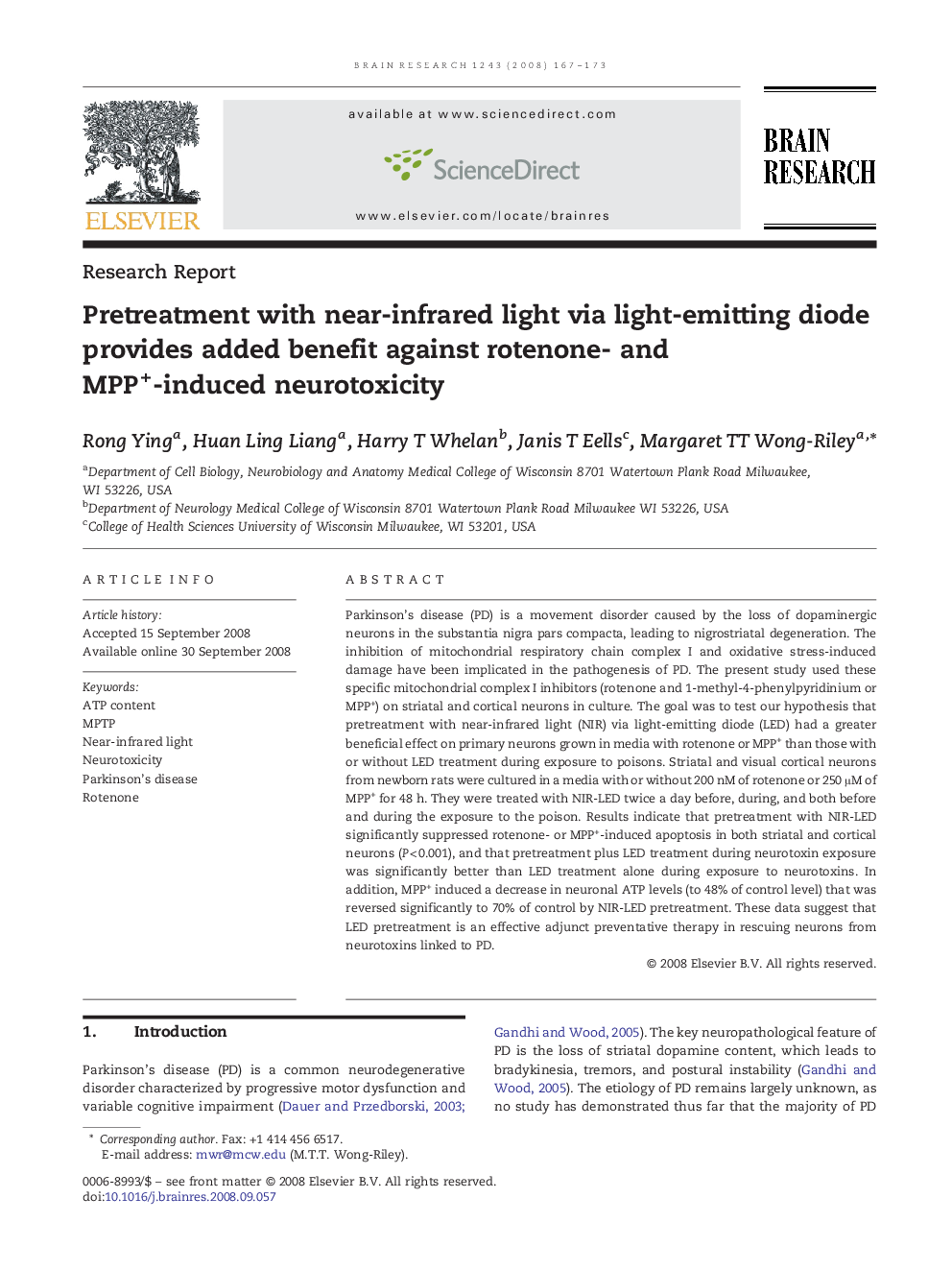| Article ID | Journal | Published Year | Pages | File Type |
|---|---|---|---|---|
| 4328961 | Brain Research | 2008 | 7 Pages |
Parkinson's disease (PD) is a movement disorder caused by the loss of dopaminergic neurons in the substantia nigra pars compacta, leading to nigrostriatal degeneration. The inhibition of mitochondrial respiratory chain complex I and oxidative stress-induced damage have been implicated in the pathogenesis of PD. The present study used these specific mitochondrial complex I inhibitors (rotenone and 1-methyl-4-phenylpyridinium or MPP+) on striatal and cortical neurons in culture. The goal was to test our hypothesis that pretreatment with near-infrared light (NIR) via light-emitting diode (LED) had a greater beneficial effect on primary neurons grown in media with rotenone or MPP+ than those with or without LED treatment during exposure to poisons. Striatal and visual cortical neurons from newborn rats were cultured in a media with or without 200 nM of rotenone or 250 μM of MPP+ for 48 h. They were treated with NIR-LED twice a day before, during, and both before and during the exposure to the poison. Results indicate that pretreatment with NIR-LED significantly suppressed rotenone- or MPP+-induced apoptosis in both striatal and cortical neurons (P < 0.001), and that pretreatment plus LED treatment during neurotoxin exposure was significantly better than LED treatment alone during exposure to neurotoxins. In addition, MPP+ induced a decrease in neuronal ATP levels (to 48% of control level) that was reversed significantly to 70% of control by NIR-LED pretreatment. These data suggest that LED pretreatment is an effective adjunct preventative therapy in rescuing neurons from neurotoxins linked to PD.
